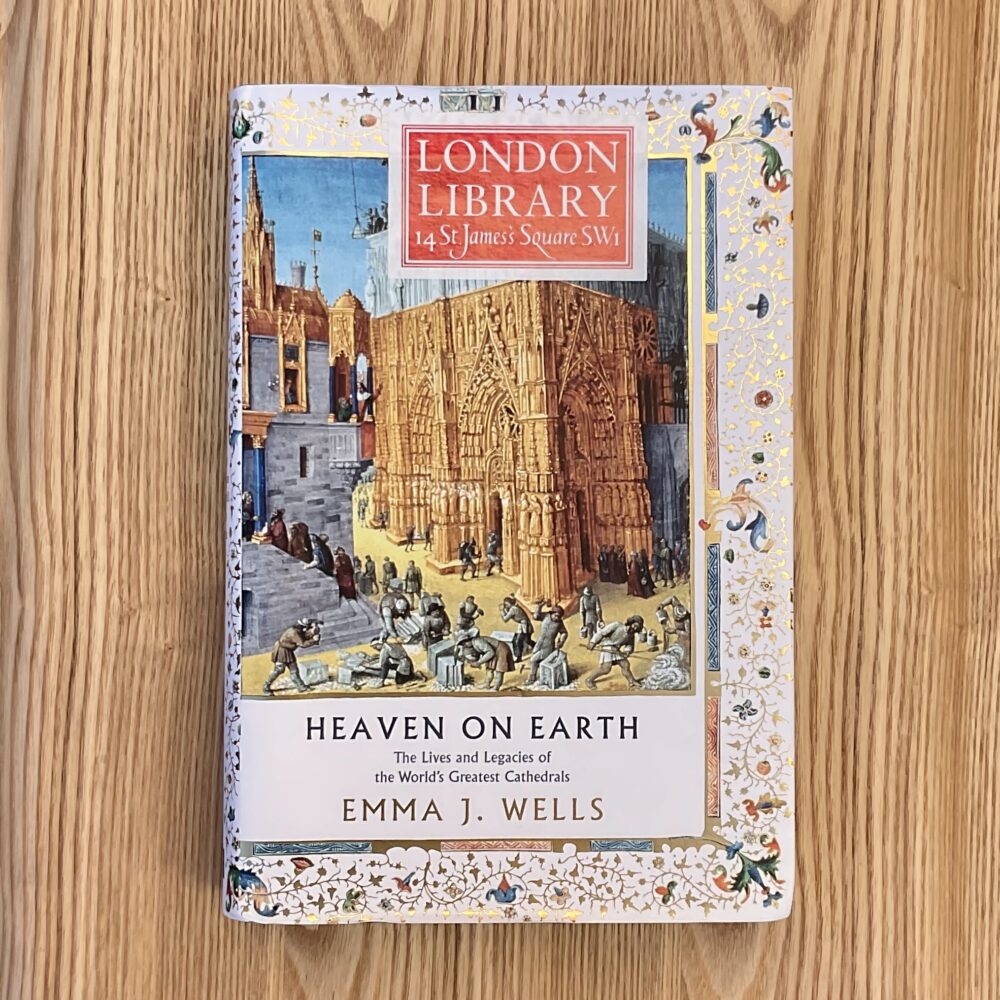I’ve been reading ‘Heaven on Earth’ by Emma J Wells

Published in 2022, this is a brief history of sixteen cathedrals. I decided to read it after seeing a review in The Spectator. As I’ve previously reflected, one of the major things the book made me consider was that—at least traditionally—cathedrals have had functions which span way beyond the sacred. As Wells puts it,
Between them, the cathedrals featured tell a narrative faith, intellectual culture, art, politics and economy.
In her introduction, Wells drew a comparison between buildings and books:
We can argue, quite plausibly, then, that buildings are books without words—and through their stones the dead may speak.
What I failed to realise before embarking on this tome is that while buildings may be books without words, I’m not necessarily all that interested in what they have to say. Most of this book was detailed histories of buildings with which I have no particular relationship. Therefore, while I’m sure these histories represent years of detailed research, if I’m honest, I found it all a bit dull. However, it did still give me some tangetial food for thought. This was, in part, because this isn’t normally the sort of thing I read.
Wells has a short section about the devastating fire at Norte-Dame de Paris in 2019. In the context of the histories of these 16 cathedrals, a devastating fire does not stand out at all: nearly all of them have suffered over the years. However, the response to the fire—to replicate and rebuild as closely as possible to what went before—is truly exceptional. In the history of these grand historic buildings, fires have generally been followed by modifications befitting the social and architectural mores of the time. This trend is also true of the York Minster fire of 1984, also briefly covered in the Wells’s book.
I remember feeling a tinge of disappointment when President Macron announced the plan to rebuild exactly what was destroyed. The announcement came after fevered speculation about possible new additions, and it felt a little dull. It wasn’t until I read this book that I also reflected on how historically anomalous it was.
I was reading earlier this year about an inspired campaign to introduce a new Grade III listing for buildings on ecological grounds: “The status would apply automatically to every building and it would come with just one rule: the property may only be demolished if it is structurally unsafe, or is given special dispensation by the local planning authority.”
It strikes me that preserving old building often means modernising them, not dunking them in aspic. And I think that’s what Wells made me reflect on most. Cathedrals were once ever-changing hubs of both religious and secular activity, adapting to serve society as the world changed. These days, they typically feel frozen in time, suspended in antiquity, serving more as curiosities than as community hubs.
Given the opportunity to redefine one of the world’s greatest Cathedrals for the 21st century, with a dash of modern relevant architectural flair, society shrugged its shoulders and said, “put it back like it was before.”
And maybe that means Cathedrals are over.
Thank you to the London Library for letting me borrow this book.
This post was filed under: Post-a-day 2023, What I've Been Reading, Cathedrals, Emma J Wells.